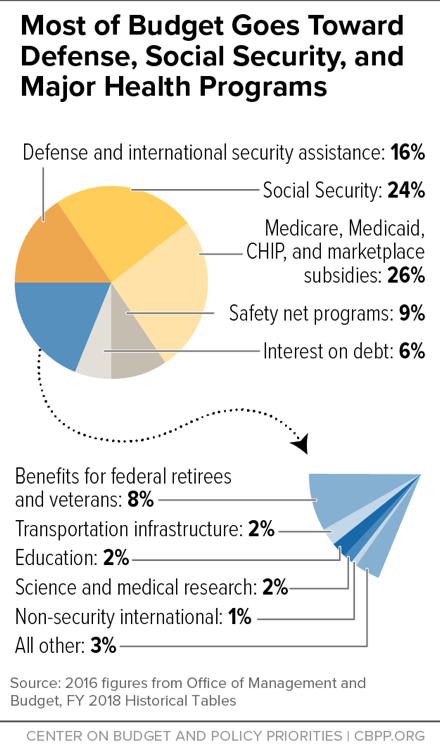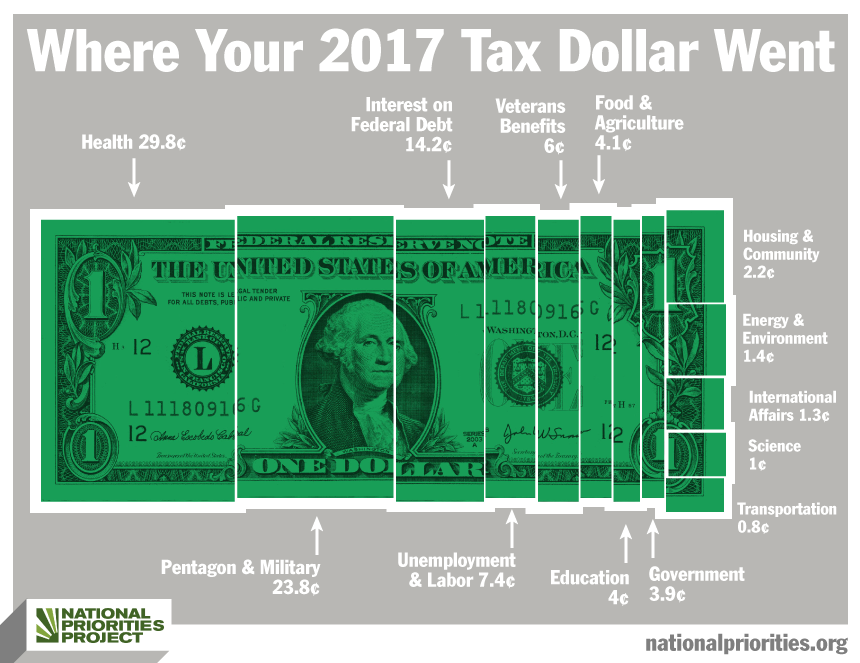And for what, exactly? Where does it all go? And what do you get for it?
It's not like the IRS gives you a detailed receipt of how your dollars are being spent.
Fortunately, you can create your own customized tax receipt here, courtesy of the National Priorities Project, a left-leaning educational group that tracks federal spending. Enter the amount you paid in taxes in 2017 and it spits out an itemized estimate of how that money was and will be spent. The estimate is for income tax only, not payroll and excise (sales) taxes.
Despite the pain of giving away money, some degree of taxation is necessary for any society to function. Without taxes, a lot of basic stuff we all need on a daily basis -- things like roads and schools and fire departments -- simply wouldn't be available for everyone. Many of these services come from local taxes, but a surprising number of essential services are also dependent on some level of federal funding.
Federal income taxes are considered to be "progressive," which means the more you earn, the higher your tax rate. They collectively make up nearly half of all federal revenue, and pay for everything from education programs to highways to airport security.
 Keep in mind that the humongous pot of funding for trust fund programs like Social Security and Medicare comes largely from payroll taxes, not income taxes (which is why we're not talking about those programs here). In fiscal year 2016, the federal government spent just under $4 trillion (that's with 12 zeros!) according to the Pew Research Center. And nearly 40 percent of that -- almost $1.6 trillion -- went just towards Social Security and Medicare alone.
Keep in mind that the humongous pot of funding for trust fund programs like Social Security and Medicare comes largely from payroll taxes, not income taxes (which is why we're not talking about those programs here). In fiscal year 2016, the federal government spent just under $4 trillion (that's with 12 zeros!) according to the Pew Research Center. And nearly 40 percent of that -- almost $1.6 trillion -- went just towards Social Security and Medicare alone.
But for now we're just focusing on the other 60 percent that income taxes help pay for.
Also, remember that huge, controversial Republican tax bill that President Trump signed in December? Well, that's going to change things quite a bit as well. BUT, it doesn't go into effect until next year. So you'll notice those changes when you fill out your 2018 taxes (in 2019). This time around, though, we're still sticking with the old rules.
In addition to federal taxes, residents in all but nine states also have to pay state income taxes, which vary pretty dramatically by state. Click here for specific details on what services your state income taxes pay for California, home of the highest personal income tax rate in nation.
The average single U.S. worker without kids -- let's call him Bob -- earned about $52,543 in 2016, according to an extensive analysis by the Organization for Economic Co-operation and Development. The report found that Bob paid a combined $13,649 in taxes -- including payroll, federal income, state and local government -- or roughly 31.7 percent of his total earnings. Ouch.
Although that may sound like a lot, it's actually a good deal less than what workers in most other wealthy nations pay (despite claims to the contrary by certain tax-bashing politicians). In fact, in its comparative analysis of 35 mostly high-income nations, the OECD report found that the the average U.S. tax burden was actually in the bottom third of the pack -- 25th out of 35 -- for both single workers and workers with children.
Even so, President Trump, backed by Republican leaders in Congress, pushed hard to overhaul America's exceedingly complex system of taxation by cutting rates and slashing the budgets "massively" of nearly every federal program except defense-related spending.
“With lower taxes on America’s middle class and businesses, we will see a new surge of economic growth and development,” insisted Trump, a billionaire who has consistently refused to publicly release his own returns and has repeatedly boasted of not paying any income taxes.
It's the first major overhaul of the tax code in more than 30 years.

